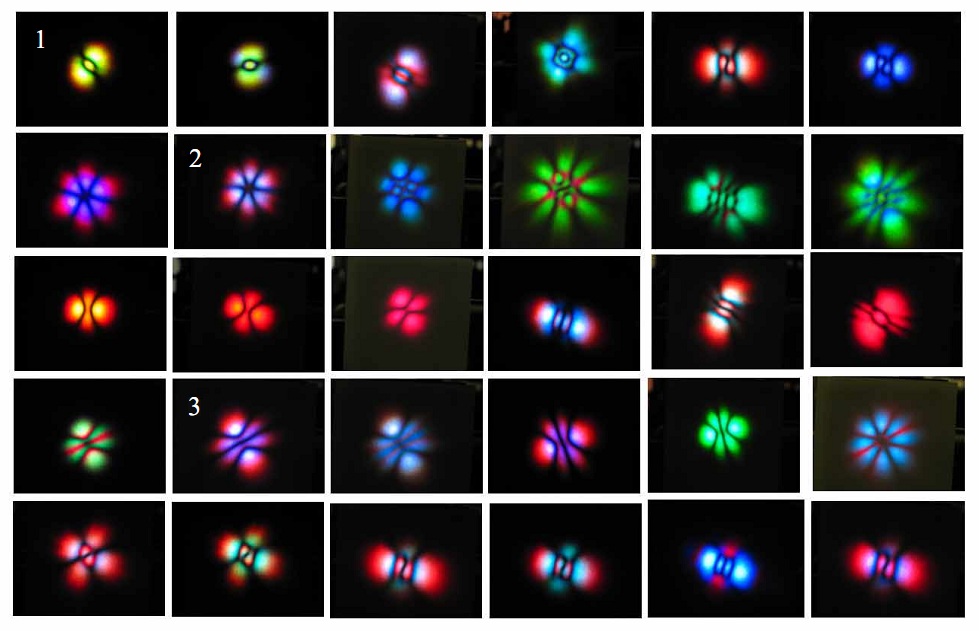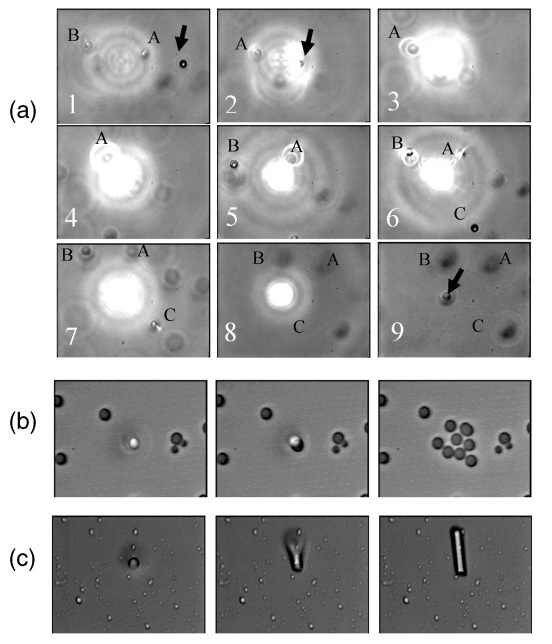The Ultrafast and Nonlinear Optics Lab at Penn State![]()
The Ultrafast and Nonlinear Optics Lab at Penn State![]()
Supercontinuum based research
Supercontinuum Generation
We have developed a simple approach to obtaining spectrally smoothed supercontinuum (SC) by using unstably mode-locked femtosecond laser pulses. The spectrum smoothing effect is due to the averaging of the supercontinua generated in a nonlinear photonic crystal fiber by modulated pulses. Theoretical analysis based upon solving the generalized nonlinear Schrödinger equation is presented in [1], which qualitatively agrees well with the experimental observation. Also, the application of the smoothed SC to broadband coherent anti-Stokes Raman scattering spectroscopy is demonstrated in the paper, which can result in a relatively smooth nonresonant background and suppress spurious peaks.
We have also worked on other methods for generating supercontinuum. In [2] we demonstrated supercontinuum generation in individual fibers of a commercial Schott imaging fiber taper. Supercontinuum spectrum covering a wavelength range from about 500 nm to 1 μm was obtained. Unlike conventional approaches which use either a single micro-structured photonic crystal fiber (PCF) or an individual fiber or PCF taper, the availability of many fibers in an imaging taper can open new possibilities to independently and controllably generate supercontinuum arrays.

Figure above:
Some observed far-field patterns of the supercontinuum generated in an imaging
fiber taper (model 25970MU, Schott). These pictures were captured at a few
centimeters away from the taper output end. Similar supercontinuum pattern can
sometimes exhibit dramatically different colors [2].
Supercontinuum Tweezers
We demonstrated in [3], for the first time to our knowledge, three-dimensional (3D) trapping and manipulation of microscopic objects by use of supercontinuum white light generated from photonic crystal fibers. Furthermore, we show that the supercontinuum white-light optical tweezers used have the unique capability to perform optical scattering spectroscopy of a single 3D trapped object over a broad wavelength range. These novel tweezers can potentially open a promising avenue toward simultaneous manipulation and characterization of microscopic objects.

Figure above: Trapping and manipulation of a microsphere using a supercontinuum tweezer [3].
Other Applications (Imaging and remote sensing)
Coming soon!
References
[1] K. Shi and Z. Liu, “Spectrally
smoothed supercontinuum generation by using unstably mode-locked laser pulses,”
Applied Physics Letters 92, 131102 (2008).
[2]
K. Shi, F. G. Omenetto, and Z. Liu, “Supercontinuum generation in an imaging
fiber taper,” Optics Express 14, 12359-12364 (2006).
[3] P. Li., K. Shi, and Z. Liu,
"Manipulation and spectroscopy of a single particle by use of white-light
optical tweezers," Optics Letters 30, 156-158 (2005).
[4] K. Shi, P. Li, and Z. Liu, “Broadband coherent anti-Stokes Raman scattering spectroscopy in supercontinuum optical trap,” Applied Physics Letters 90, 141116 (2007).
Support
This work was supported by the
National Science Foundation.
The Pennsylvania State University Department of Electrical Engineering